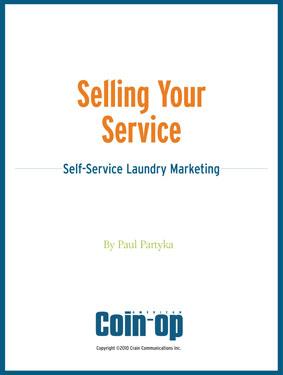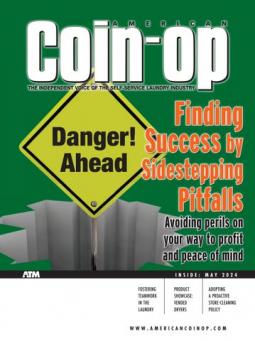Communicating Expectations Through Your Employee Handbook (Part 2)

NASHVILLE, Tenn. — Clear communication with employees from their first day working at a business such as a self-service laundry is needed to make sure all questions are answered and expectations of both employee and employer are spelled out.
This was the message of Beth Milito, executive director of the National Federation of Independent Business (NFIB), during a recent webinar on the topic.
In Part 1 of this article, we explored the broad topics that employee handbooks should address. Here in Part 2, we begin our examination of essential policies that should be included in such a document.
So, what should go into a laundry’s employee handbook? Milito suggests looking at 10 topics when first creating such a document to set expectations of what’s required of both the staff and the company.
1. Introduction — “The introduction is a welcome statement to new and existing employees,” she says. “It’s telling employees why it is you are issuing this handbook and offers some general information about the business.”
Milito suggests including the following:
- History of the Company — How the company got started and how it has grown. The company’s founder(s) and current leadership can be introduced here.
- Values — Provide the company’s core values, and explain what each value means to the company and why it has been chosen as a core value.
- Mission Statement — Help employees understand the company’s purpose by providing and explaining its mission.
2. At Will Statement — “You want to follow the introduction with the employment at will statement,” Milito says. “In all states except Montana, employment is ‘at will.’ That means that in the absence of a written employment contract or a collective bargaining agreement — in other words, union business — either the employer or the employee may terminate employment for any reason that is not contrary to law.”
Cases where it would not be legal, Milito says, are terminating someone because they are over 50, pregnant, or in some other protected category. Montana’s “good cause” standard means that the employer must demonstrate a good cause for firing the employee.
“The other category that you may want to define at the start of the handbook in the introduction section, or under the Wage and Hour section, is a discussion or description of whether or not employees are exempt or non-exempt,” Milito says.
Exempt employees are not entitled to overtime pay and typically hold executive, administrative or professional positions. Non-exempt employees typically hold non-supervisory positions and are entitled to overtime pay for hours worked over 40 hours a week, or as specified by state law.
Contractors are workers who do work for the company but are not part of the payroll. Milito uses the example of an IT or website designer who comes in occasionally, noting that they are not part of the exempt/non-exempt discussion.
3. Equal Employment Opportunity Policy — The Equal Employment Opportunity Commission (EEOC) is the federal agency that oversees and enforces federal laws that make it illegal to discriminate against a job applicant or employee because of their protected status. Protected categories include race, color, religion, sex, age, disability, national origin, veteran status, citizenship, pregnancy, genetic information, and all other categories protected by federal, state and local anti-discrimination laws.
“This is a very important legal policy that should be included in all employee handbooks,” Milito says. “It’s a reminder that employees in your business are protected from discrimination under all applicable federal, state and local anti-discrimination laws. You also want to set forth procedures for reporting violations for EEO infractions. It’s a good place to list the contact for the person responsible at your company for EEO policy.”
4. Policy Against Unlawful Harassment — “This, along with the at will policy and the EEO policy, are the three must-have policies in every employee handbook,” Milito says. This section establishes the company’s policy against all forms of unlawful harassment, including sexual harassment.
This section should also outline the reporting procedure and list the contact information for the individual who will be receiving the complaints.
“You hope that individuals are comfortable approaching his or her own manager about any issues,” Milito says, “but it’s always good to have an alternative person to whom employees can report harassment or unlawful workplace behavior, just in case the manager or direct supervisor is the individual who is engaging in the unlawful conduct.”
She says having such a procedure or policy in place for reporting unlawful harassment will go a long way toward protecting the company from liability if a claim is made, and if the company addresses the harassment promptly.
5. Wage and Hour Policy — “Some states have laws that differ from the Fair Labor Standards Act (FLSA), which is the federal law that governs overtime and minimum wage and deciphers between the exempt and non-exempt employees,” Milito says. “It’s important to remember that employers must follow both state and federal law. And if the laws conflict, the employer must follow the higher standard. In other words, the law that gives the greatest benefit to the employees. For example, if a state has a minimum wage higher than the federal wage of $7.25 an hour—and many states do—the employer must comply with the state minimum wage.”
The U.S. Department of Labor (dol.gov) has a good wage and hour website and a map that easily lets you click on it to find out what the minimum wage is in your state, Milito says. “(It) also has a map where you can click on your state to determine whether or not you have meal and/or rest break laws in your state, which can be a helpful resource.”
Check back Tuesday for the conclusion, when we’ll round out the top 10 essential policies that should be in employee handbooks.

PayRange Agrees to License Tech Patents to WASH

Communicating Expectations Through Your Employee Handbook (Part 1)

Laundry Industry Events Continue to Fill Calendar

What are Your Favorite Laundromat Tools? (Conclusion)

Laundry Biz CEO Part of NMSDC Entrepreneur Program

What are Your Favorite Laundromat Tools? (Part 1)

Tumble Smart Secures Key Tech Platform Patent

Route Optimization for Residential Pickup & Delivery (Conclusion)

P&G Recalls 8.2M Bags of Laundry Detergent Packets

Route Optimization for Residential Pickup & Delivery (Part 1)
Podcasts for You
The Man Behind the Clean Show

Retiring show manager John Riddle talks Clean history and reminisces about his long career, including his time in pro baseball, stadium management, rodeo production, and more.
Pricing Strategies

Russ Arbuckle, president of distributor Wholesale Commercial Laundry Equipment S.E., talks pinpointing the factors that may signal when it’s time to raise a laundry’s vend prices.
Diving into Diversification

Brendan Ristaino, sales manager for distributor Yankee Equipment, examines revenue-producing extra-profit centers that best complement a vended laundry business.
From the Research Center
Selling Your Service: Self-Service Laundry Marketing

The Proper Equipment Mix: Self-Service Laundry Management

Designing Your Store: Self-Service Laundry Management

Latest Digital Editions
Digital EditionAmerican Coin-OpMay 2024

- Finding Success by Sidestepping Pitfalls
- Fostering Teamwork in the Laundry
- Product Showcase: Vended Dryers
- Pointers from Paulie B: Adopting a Proactive Store-Cleaning Policy

